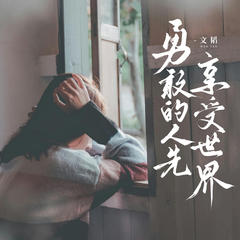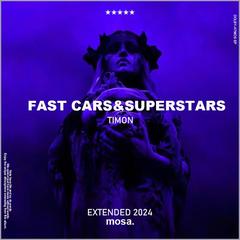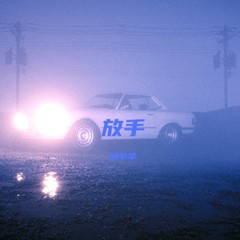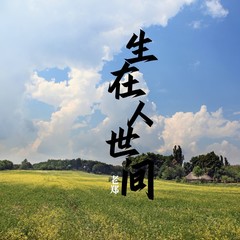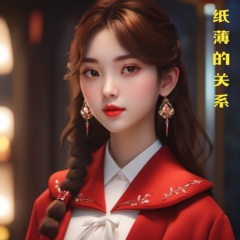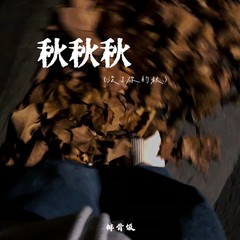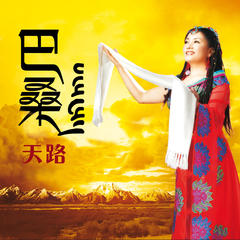Ella Fitzgerald
做为一位伟大的爵士女歌手,Ella Fitzgerald似乎永远不确知自己到底有多好,当她步下舞台,喝彩声从四面八方传来,全场观众起立给予她最高的敬意与欢呼时,她总会转向她的朋友,好像在请求宽恕似的问道:“我表现的还可以吗?”E lla Fitzgerald的音色充满了女性的特质与魅力,当她用绵密,轻柔的声音浅吟低唱时,没有人能将目光移开,如果我们以忧郁来形容Billie Holiday,那么Ella代表的便是一抹阳光。 艾拉。菲兹杰拉德1918年出生于弗吉尼亚,在纽约成长。小时候她并未想过自己有一天会成为歌星,直至1934年在哈斯门歌剧院所举办的一场业余歌舞比赛中,E lla报考舞蹈一项,却因太紧张,两腿一直无法站稳,只得转报歌唱项目,唱的是Connee Boswill的歌“The Object Of My Affection”,并得到首奖。当晚Chick Webb大乐团的主要成员Bardu Ai也听了她的歌声,激动不已,一直在Webb面前推荐这位女孩,Webb终于同意让她于次年的耶鲁舞会中与乐团同台演出,并协议:如果学生喜欢她,她便可以留下来。毫无疑问她被留下来了。 往后十年,她以爵士女歌手的身份享誉乐坛,男歌手Mel Torme曾说:“我常想,如果有爵士灵药这类东西的话,Ella Fitzgerald在一出生时便吞下了它。”她为DECCA唱片录音,在爵士俱乐部演唱,并在著名的经纪人与唱片制作人Norman Granz的安排下巡回演出。 1955年起,Granz以兼具音乐性与商业性的作法,有计划的经营Ella的歌唱事业,并让她为他自己的Verve唱片公司录音,塑造她成为国际乐坛的头条人物。他深知E lla拥有不凡的爵士天份,但必须更进一步拓展演唱的曲目,才能将这股天份发挥的更完美。于是他让Ella从比较世俗的Tin Pan Alley曲调中走出来,开始演唱更具格调的音乐剧歌曲,第一部灌录的便是Cole Porter的歌曲集,承包Ella说:“这是我演唱生命中的一个转折点。”之后,她又陆续录了格什温,罗杰斯与哈特,艾林顿公爵等人的音乐剧作品。她后来吐露说:“演唱这些曲子,帮助我注入以前我所达不到的境界,而更好的是我能为那些从未听过这些曲子的人演唱。”而她自己最喜欢的又是什么?她说:“我喜欢美丽的事物,喜欢演唱那种能让人全然放松,像说故事一样的歌曲,我喜欢听别的歌手演唱,并去体会这些人唱歌时内心的感受。”是啊,E lla演唱时最注重的是与听众之间的心灵交流。 "The First Lady of Song," Ella Fitzgerald was arguably the finest female jazz singer of all time (although some may vote for Sarah Vaughan or Billie Holiday). Blessed with a beautiful voice and a wide range, Fitzgerald could outswing anyone, was a brilliant scat singer, and had near-perfect elocution; one could always understand the words she sang. The one fault was that, since she always sounded so happy to be singing, Fitzgerald did not always dig below the surface of the lyrics she interpreted and she even made a downbeat song such as "Love for Sale" sound joyous. However, when one evaluates her career on a whole, there is simply no one else in her class. One could never guess from her singing that Ella Fitzgerald's early days were as grim as Billie Holiday's. Growing up in poverty, Fitzgerald was literally homeless for the year before she got her big break. In 1934, she appeared at the Apollo Theater in Harlem, winning an amateur contest by singing "Judy" in the style of her idol, Connee Boswell. After a short stint with Tiny Bradshaw, Fitzgerald was brought to the attention of Chick Webb by Benny Carter (who was in the audience at the Apollo). Webb, who was not impressed by the 17-year-old's appearance, was reluctantly persuaded to let her sing with his orchestra on a one-nighter. She went over well and soon the drummer recognized her commercial potential. Starting in 1935, Fitzgerald began recording with Webb's Orchestra, and by 1937 over half of the band's selections featured her voice. "A-Tisket, A-Tasket" became a huge hit in 1938 and "Undecided" soon followed. During this era, Fitzgerald was essentially a pop/swing singer who was best on ballads while her medium-tempo performances were generally juvenile novelties. She already had a beautiful voice but did not improvise or scat much; that would develop later. On June 16, 1939, Chick Webb died. It was decided that Fitzgerald would front the orchestra even though she had little to do with the repertoire or hiring or firing the musicians. She retained her popularity and when she broke up the band in 1941 and went solo; it was not long before her Decca recordings contained more than their share of hits. She was teamed with the Ink Spots, Louis Jordan, and the Delta Rhythm Boys for some best-sellers, and in 1946 began working regularly for Norman Granz's Jazz at the Philharmonic. Granz became her manager although it would be nearly a decade before he could get her on his label. A major change occurred in Fitzgerald's singing around this period. She toured with Dizzy Gillespie's big band, adopted bop as part of her style, and started including exciting scat-filled romps in her set. Her recordings of "Lady Be Good," "How High the Moon," and "Flying Home" during 1945-1947 became popular and her stature as a major jazz singer rose as a result. For a time (December 10, 1947-August 28, 1953) she was married to bassist Ray Brown and used his trio as a backup group. Fitzgerald's series of duets with pianist Ellis Larkins in 1950 (a 1954 encore with Larkins was a successful follow-up) found her interpreting George Gershwin songs, predating her upcoming Songbooks series. After appearing in the film Pete Kelly's Blues in 1955, Fitzgerald signed with Norman Granz's Verve label and over the next few years she would record extensive Songbooks of the music of Cole Porter, the Gershwins, Rodgers & Hart, Duke Ellington, Harold Arlen, Jerome Kern, and Johnny Mercer. Although (with the exception of the Ellington sets) those were not her most jazz-oriented projects (Fitzgerald stuck mostly to the melody and was generally accompanied by string orchestras), the prestigious projects did a great deal to uplift her stature. At the peak of her powers around 1960, Fitzgerald's hilarious live version of "Mack the Knife" (in which she forgot the words and made up her own) from Ella in Berlin is a classic and virtually all of her Verve recordings are worth getting. Fitzgerald's Capitol and Reprise recordings of 1967-1970 are not on the same level as she attempted to "update" her singing by including pop songs such as "Sunny" and "I Heard It Through the Grapevine," sounding quite silly in the process. But Fitzgerald's later years were saved by Norman Granz's decision to form a new label, Pablo. Starting with a Santa Monica Civic concert in 1972 that is climaxed by Fitzgerald's incredible version of "C Jam Blues" (in which she trades off with and "battles" five classic jazzmen), Fitzgerald was showcased in jazz settings throughout the 1970s with the likes of Count Basie, Oscar Peterson, and Joe Pass, among others. Her voice began to fade during this era and by the 1980s her decline due to age was quite noticeable. Troubles with her eyes and heart knocked her out of action for periods of time, although her increasingly rare appearances found Fitzgerald still retaining her sense of swing and joyful style. By 1994, Ella Fitzgerald was in retirement and she passed away two years later, but she remains a household name and scores of her recordings are easily available on CD.

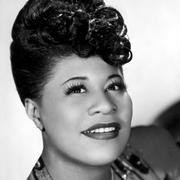
 When Your Lover Has Gone - Ella Fitzgerald
When Your Lover Has Gone - Ella Fitzgerald